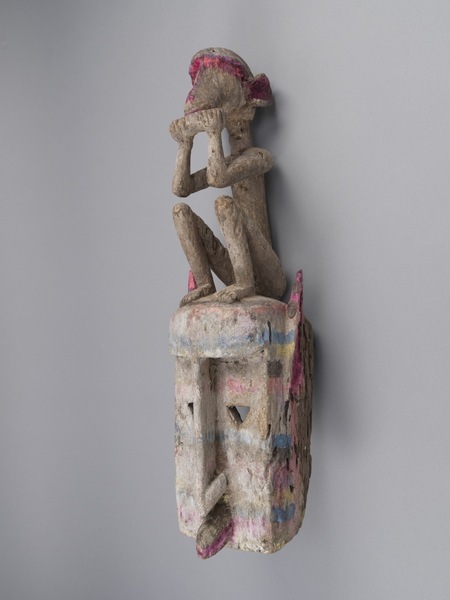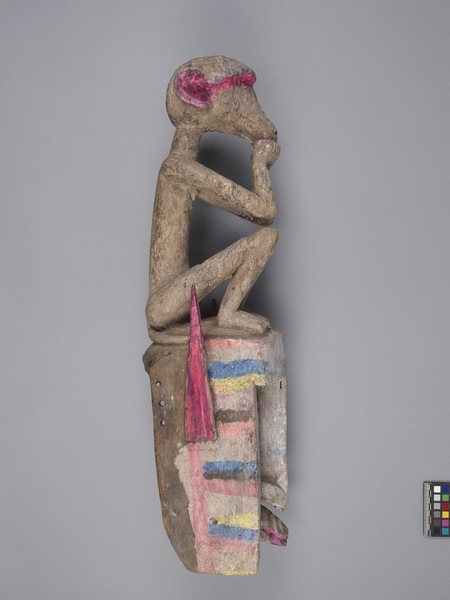Monkey Mask Item Number: 3420/15 from the MOA: University of British Columbia




Description
Monkey mask carved of wood and painted. The mask has a sunken flat square face, with prominent brow ridge, thin pointed nose, pointed mouth with bright pink lips, small cutout triangular eyes, and pointed ears. The mask is painted with horizontal bands of solid bright pink, blue, yellow, and black. Seated monkey figure has thin curved torso with long arms that hold something in front of its face. The monkey has a pointed muzzle, with a band of bright pink painted across its eyes to its ears, and down its nose.
History Of Use
The monkey masks are usually used by the Awa (mask) male society, and are used to represent anti-social behaviour, and the dangers of the wilderness. Wild, uncivilized, and dangerous behaviours are opposite to the beliefs of the Dogon. Thus, men that perform these masks are mimicking behaviour that the community should avoid. The masks are performed as part of Dama festivals, which commemorate the origin of death. During this ritual, the masked performances carried out by Dogon men lead the dead to the ancestral realm. At the end of Dama, the deceased belong to the ranks of ancestors and through the word of Amma, the Creator, the community is given strength, fields are fertilized, and women and cattle are fertile. Since the 1930s, these masks have been used outside Dama for entertainment performances, especially for tourists.
Iconographic Meaning
Mask representing the black monkey, Dege, a wicked and gluttonous spirit.
Item History
- Made in Mali during 1950
- Owned by Richard Tchuemegne before February 5, 2020
- Received from Richard Tchuemegne (Seller), Michael O'Brian Family Foundation (Funding source) and Museum of Anthropology Exhibitions Budget (Funding source) on February 5, 2020
What
Who
- Culture
- Dogon
- Previous Owner
- Richard Tchuemegne
- Received from
- Richard Tchuemegne (Seller), Michael O'Brian Family Foundation (Funding source) and Museum of Anthropology Exhibitions Budget (Funding source)
Where
- Holding Institution
- MOA: University of British Columbia
- Made in
- Mali
When
- Creation Date
- during 1950
- Ownership Date
- before February 5, 2020
- Acquisition Date
- on February 5, 2020
Other
- Condition
- fair
- Accession Number
- 3420/0015